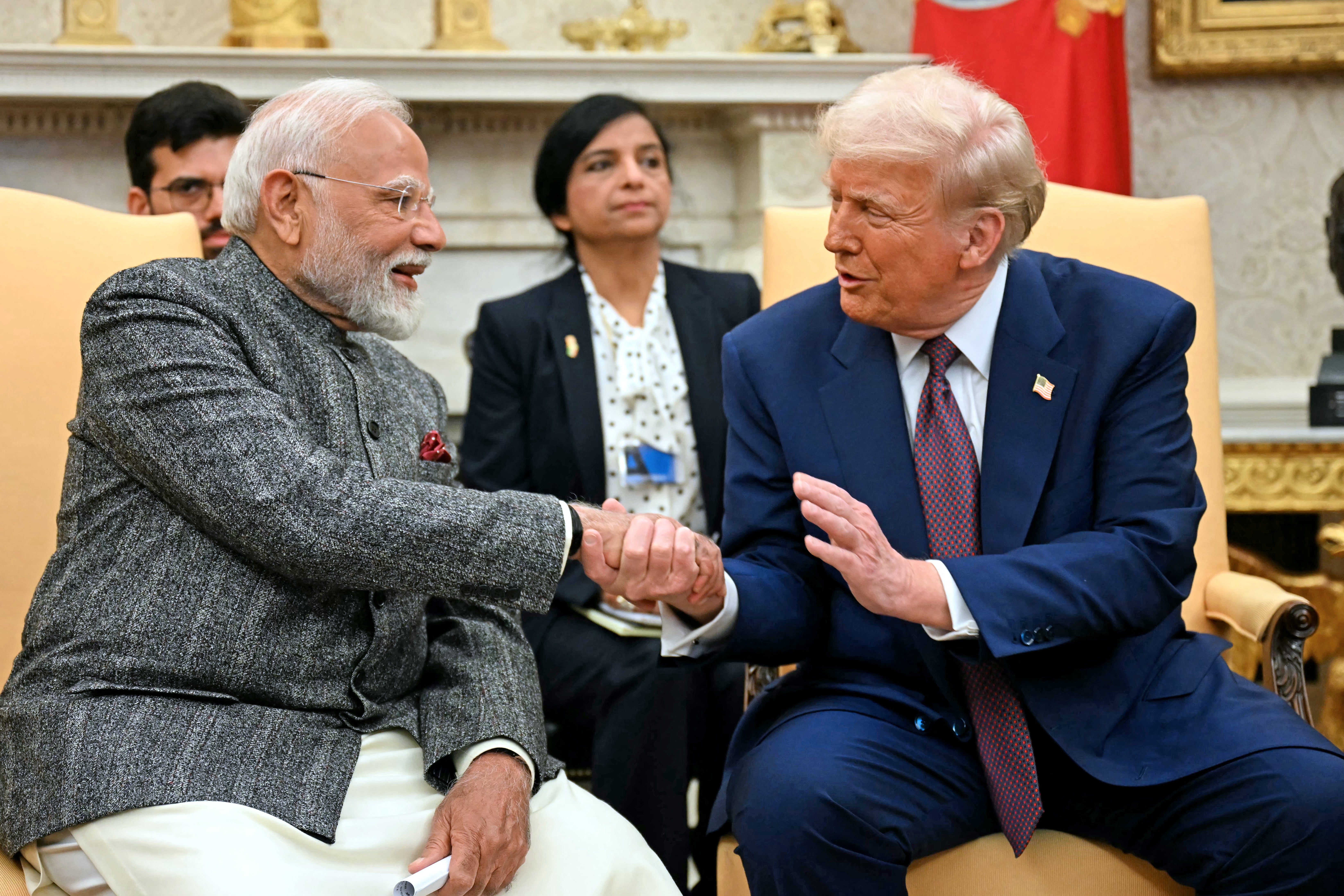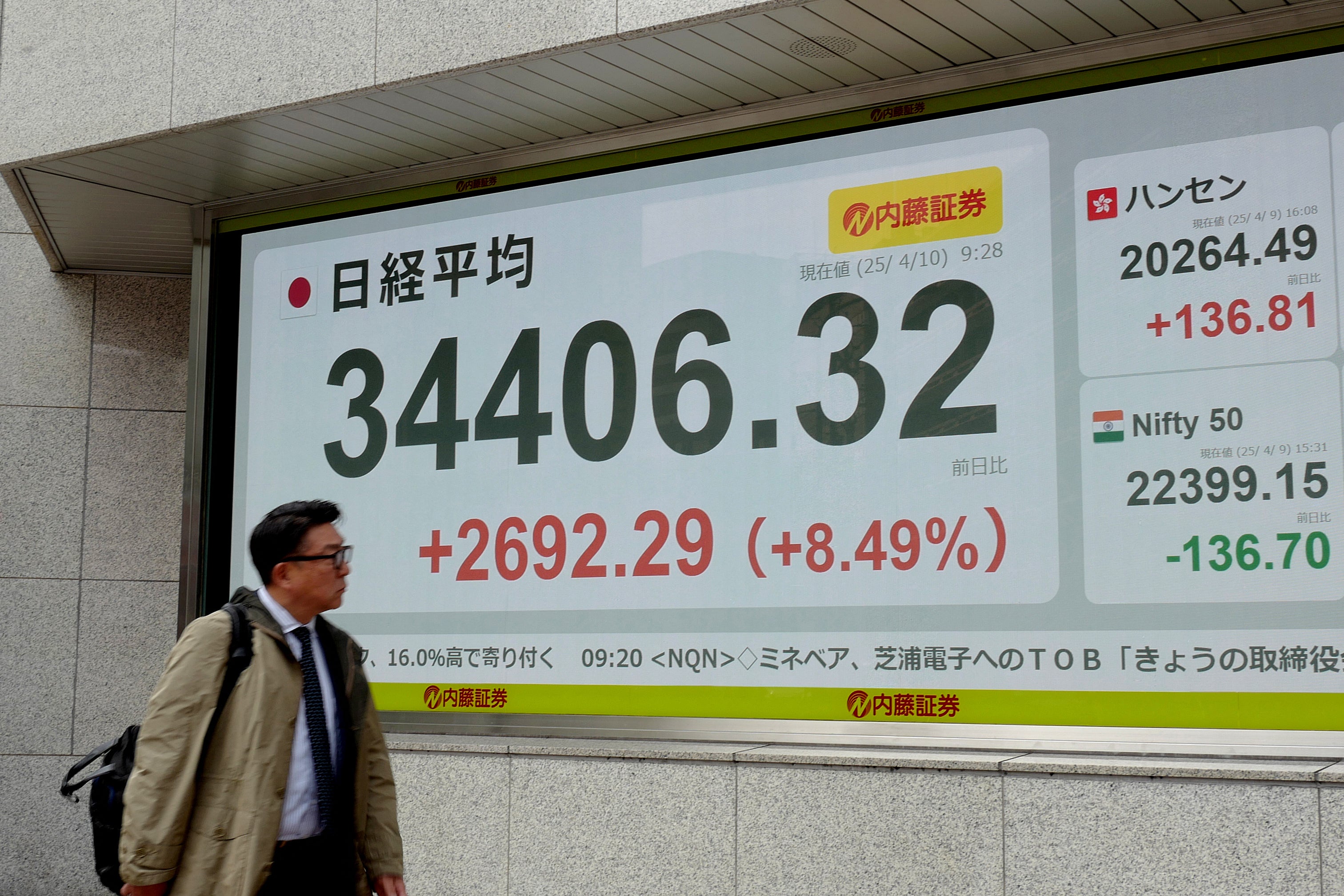Donald Trump’s latest tariff hikes have hit Asian countries the hardest, signalling a deepening rift with key economies in his drive to reshape global commerce.
The hardened position of the US towards longstanding partners such as India and Japan could reshape strategic alignments in Asia, casting doubt on the reliability of Washington as an ally.
Three months after unveiling sweeping tariffs for nearly all major countries in the world, Mr Trump on Friday enforced new and revised levies for over 90 nations, with rates soaring as high as 49 per cent.
Among the hardest hit were America’s allies in Asia – many heavily reliant on exports to the US markets for clothing, electronics, chips and cars – even as they scrambled to strike deals with Mr Trump’s negotiators before his 1 August deadline. Myanmar, India and Laos in particular were slapped with almost prohibitive rates.
Steep penalties and divisions in South Asia
Mr Trump seemed to single out India among major economies, imposing a steep 25 per cent tariff on the South Asian nation while blasting it for its burgeoning energy and weapons trade with Russia.
Mr Trump’s aggressive rhetoric in recent days had already undermined hopes of New Delhi getting preferential treatment in trade negotiations compared to other Asian economies given the president’s bonhomie with Indian prime minister Narendra Modi. His announcement of a steep tariff put paid to any such hope.
The US president went after India even after calling it a “good friend” and despite the country being regarded as a partner in counterbalancing China in the Indo-Pacific.

New Delhi and Washington had been working to finalise a trade deal for months and Indian officials expected an agreement by September or October.
In recent weeks, though, the talks had reportedly reached a deadlock over agriculture and dairy. While Washington sought greater access to the Indian market for its farm exports like wheat, corn, cotton, and genetically modified crops, New Delhi insisted that agriculture and dairy sectors, which employ over 80 million people, were off-limits.
Although the 25 per cent levy on Indian exports announced on Thursday was slightly less than the 27 per cent proposed in April, it came with an unspecified penalty for New Delhi’s purchases of Russian oil and weapons.
US secretary of state Marco Rubio said on Thursday that India’s close relations with Moscow remained a “point of irritation” in relations with Washington.
India’s neighbours Sri Lanka and Bangladesh each face a 20 per cent levy, targeting export-reliant economies that send large volumes of textiles and garments to the US.
The tariff on Bangladesh is significantly lower than the original 37 per cent rate, a big relief to the world's second-largest garment supplier.
Pakistan received a 19 per cent tariff after Mr Trump announced a last-minute trade deal with the country.
Pakistan, an ally of China as well as the US, had been wooing Mr Trump ever since he first announced the tariffs in April. It credited American diplomatic intervention for ending a brief military conflict with India in May, while New Delhi denied it, and even nominated the president for the Nobel Peace Prize.
Winners and losers in Southeast Asia
While Myanmar and Laos were slapped with a 40 per cent tariff rate each, fellow Southeast Asian nations like Malaysia, Indonesia, Thailand, Cambodia, and the Philippines faced a mid-range tariff of 19 per cent.
Myanmar and Laos were among the worst hit globally, with rates that could effectively price their exports out of the US market. These countries were especially vulnerable given their dependence on low-cost textile and agricultural exports.
Japan and South Korea managed to strike deals with the Trump administration in time and ended up with a baseline tariff rate of 15 per cent, lower than the 25 per cent floated in April.

However, a key area of concern remains unresolved: automobile exports from both East Asian nations continue to face a separate 25 per cent tariff unrelated to Thursday’s announcement.
Given that Japanese and South Korean cars and semiconductors are their key exports to the US, the continuation of such sector-specific duties casts a shadow over trade relations in the long run.
Key US ally, Taiwan, the world's largest major semiconductor manufacturer, saw a tariff reprieve from the previous 32 per cent to 20 per cent. The levy on Taipei, though, is temporary as negotiators are trying to hammer out a deal in Washington.
“The US side informed Taiwan’s negotiating team in Washington that a provisional tariff rate of 20 per cent would be applied to Taiwan,” the island’s president Lai Ching Te said on Friday.
The reason for the provisional tariff was that they had “yet to hold a concluding meeting due to procedural arrangements”, he added. “If a final agreement is reached later, the rate may be lowered.”

In West Asia, Syria was hit with a 41 per cent tariff – the highest on the list – despite limited direct trade due to existing US sanctions. Iraq was put on a 35 per cent rate, raising concerns about its oil and mineral exports.
In Central Asia, Kazakhstan was hit with a 25 per cent tariff rate, suggesting that even neutral nations weren’t exempt from Washington’s pressure tactics.
Lower levies for Australia and New Zealand
Australia was placed on a 10 per cent tariff rate in April and it appeared to have escaped an increase, at least for now. Trade minister Don Farrell said on Friday the White House had confirmed that no country was on a lower tariff rate than Australia.
"While we remain in the best possible position under the United States' new tariff regime," a government spokesperson said, “we will continue to advocate for the removal of all tariffs in line with our free trade agreement.”
Neighbouring New Zealand saw its rate climb from 10 per cent to 15. Trade minister Todd McClay called the move “unfair”, saying Wellington had requested a call with US trade negotiator Jamieson Greer to “start making a case” for a reduction.
Trade with China in limbo
China was absent from Mr Trump’s latest tariffed nations list, putting one of the world’s most critical trade relationships in limbo.
The two sides previously agreed a 90-day extension of their trade truce until 12 August.
US treasury secretary Scott Bessent said on Thursday a trade deal with China was in the works, but it was "not 100% done".
US negotiators "pushed back quite a bit" over two days of trade talks with the Chinese in Stockholm this week, Mr Bessent said in an interview with CNBC. "I believe that we have the makings of a deal," he added.
How would the tariffs impact Asian countries?
The new tariff for India was expected to impact about $40bn worth of exports to America, an Indian government source with knowledge of the trade discussions told Reuters on Friday.
The official said the trade talks were still ongoing and a delegation from the US was expected to visit New Delhi later this month.
“These significant tariffs, coupled with penalties linked to India's dealings with Russian energy and military supplies, pose serious challenges for key export sectors including electronics, pharmaceuticals, automobiles, and textiles,” said Ramnivas Mundada, director of Economic Research at Global Data.
Exporters in India said the high tariff would hurt the country's textile exports as its competitors like Bangladesh, Vietnam and Cambodia got lower levies.
"We are hoping that the tariffs will be rationalised. We will have to recalibrate our strategies depending on the final tariff imposed, Chintan Thakker, chairman of industry body ASSOCHAM in the state of Gujarat, a major apparel exporter, said.
Bangladesh called the new tariff rate a "decisive diplomatic victory".
“We proudly congratulate the Bangladesh tariff negotiators on securing a landmark trade deal with the United States, a decisive diplomatic victory,” interim leader Muhammad Yunus told the press.

 1 day ago
7
1 day ago
7









